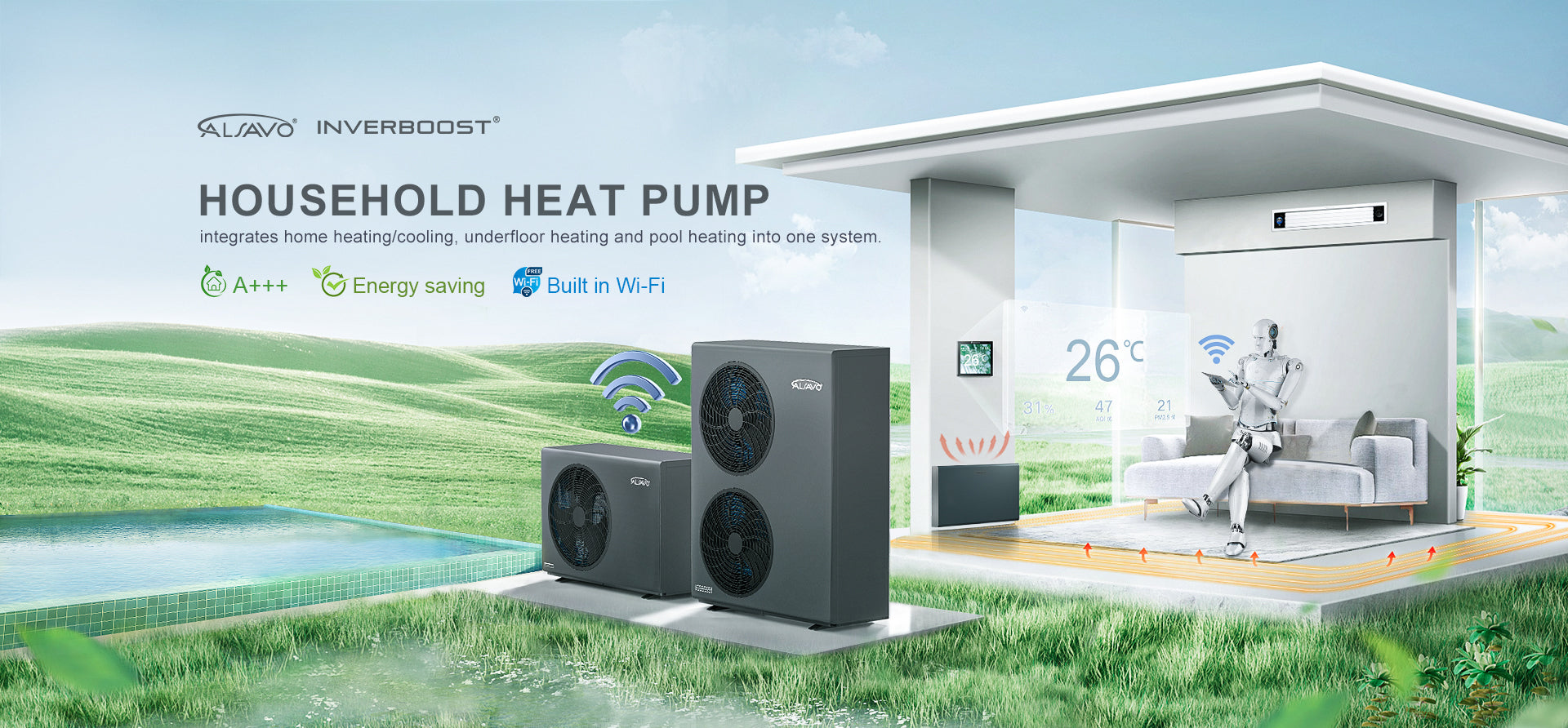In the pursuit of sustainable and cost-effective heating solutions, the combination of solar heating and heat pumps has emerged as a powerful and efficient renewable option. By harnessing the sun's energy and utilizing heat pump technology, this innovative solution not only reduces energy costs but also provides a reliable and environmentally friendly source of warmth.
A solar heating system, also known as a solar thermal system, is a technology that harnesses the energy from sunlight to provide heat for various applications. It utilizes solar collectors, such as solar panels or solar thermal collectors, to capture the sun's rays and convert them into usable thermal energy. This renewable energy source is then utilized for heating water, spaces, or other thermal processes.
The basic components of a solar heating system include:
- Solar Collectors: These devices are designed to absorb sunlight and convert it into heat. There are different types of collectors, including flat-plate collectors, evacuated tube collectors, and concentrating collectors. They are typically mounted on rooftops or in open areas where they can receive maximum sunlight exposure.
- Circulation System: The circulation system is responsible for transferring the collected heat from the solar collectors to the desired application. It usually consists of pipes, pumps, and valves that circulate a heat transfer fluid, such as water or a heat-transfer fluid like antifreeze, between the collectors and the storage or usage area.
- Storage or Usage System: The heat captured by the solar collectors needs to be stored or utilized when it is needed. In a solar water heating system, for example, a storage tank is used to store heated water for later use. In space heating systems, the heat may be distributed directly to radiators, underfloor heating systems, or heat exchangers for forced air heating.
- Backup Heating System (Optional): In situations where solar energy is insufficient, such as during cloudy days or at night, a backup heating system may be incorporated. This system ensures that heating needs are met even when solar energy is not available. Common backup systems include electric heaters, gas or oil boilers, or heat pumps.
A heat pump is a device that transfers heat from one location to another by using a small amount of energy. It operates based on the principle of moving thermal energy against the natural flow of heat, enabling it to extract heat from a cooler environment and transfer it to a warmer space.
The main components of a heat pump include:
- Evaporator: The evaporator is responsible for absorbing heat from the source, such as the air, water, or ground. It contains a refrigerant that evaporates at low temperatures, absorbing thermal energy in the process.
- Compressor: The compressor increases the pressure and temperature of the refrigerant vapor, intensifying its heat-carrying capacity. The compression process is powered by a small electric motor.
- Condenser: The condenser is where the heated refrigerant releases its captured heat to the desired space or application. As the refrigerant condenses, it transfers the heat energy to the surrounding area.
- Expansion Valve: The expansion valve reduces the pressure and temperature of the refrigerant, preparing it to enter the evaporator again to complete the cycle.
Heat pumps can extract heat from various sources, depending on the specific type:
- air source heat pump (ASHP): ASHPs extract heat from the ambient air, even in cold climates. They are commonly used for space heating and cooling in residential and commercial buildings.
- Ground Source Heat Pump (GSHP) or Geothermal Heat Pump: GSHPs utilize the relatively stable temperature of the ground or groundwater as a heat source. They are highly efficient and can be used for both heating and cooling applications.
- Water Source Heat Pump: These heat pumps extract heat from a water source, such as a lake, river, or well. They are suitable for buildings located near bodies of water and are efficient for heating and cooling purposes.
The synergy between solar heating and heat pumps lies in their complementary capabilities. Solar heating is most abundant during the daytime when the sun is shining, while heat pumps excel in providing consistent warmth even during cloudy or nighttime conditions. By integrating these technologies, homeowners and businesses can enjoy reliable heating throughout the year, regardless of weather fluctuations. The professional heat pump companies will recommend the most suitable model for your solar system.
One of the key advantages of this hybrid system is its ability to significantly reduce energy costs. Solar heating harnesses the free and renewable energy of the sun, reducing reliance on traditional heating methods powered by fossil fuels. Meanwhile, the heat pump efficiently transfers and amplifies heat, requiring only a minimal amount of electricity. This results in substantial savings on monthly energy bills and a quicker return on investment.
Furthermore, the combination of solar heating and heat pump technology contributes to a greener and more sustainable future. By utilizing renewable energy sources and minimizing the use of fossil fuels, the system helps to reduce greenhouse gas emissions and combat climate change. This eco-friendly approach aligns with the growing global focus on transitioning to clean and renewable energy solutions.
The integration of solar heating and heat pumps also offers homeowners and businesses increased energy independence. By generating their own renewable energy, individuals can reduce their reliance on the grid and protect themselves from fluctuating energy prices. This energy independence provides stability and long-term savings, shielding them from the uncertainties of traditional energy sources.
In terms of installation and maintenance, solar heating and heat pump systems are relatively straightforward and require minimal upkeep. Solar panels or collectors have a long lifespan and require occasional cleaning, while heat pumps are durable and reliable. Regular maintenance and inspections ensure optimal performance and longevity of the system, offering peace of mind to users.
Government incentives and rebates further support the adoption of solar heating and heat pump systems. Many countries and regions offer financial incentives and tax credits to promote the use of renewable energy technologies. These incentives not only reduce the initial installation costs but also accelerate the financial benefits, making the transition to this renewable solution even more appealing.
In conclusion, the combination of solar heating and heat pump technology provides a powerful and renewable solution for cutting energy costs while ensuring warmth and comfort. The integration of these two technologies optimizes energy usage, enhances reliability, and reduces environmental impact. By embracing this renewable solution, homeowners and businesses can enjoy long-term savings, increased energy independence, and contribute to a greener future. As an experienced air source heat pump supplier, Alsavo will provide you with the best quality products and services. As the world continues to prioritize sustainability, solar heating plus heat pump systems are poised to play a vital role in our journey towards a cleaner and more affordable energy landscape.
tags : heat pump specialists, air source heat pump companies, Solar Heating, Heat Pump, Renewable Energy, Energy Efficiency, Energy Savings, Sustainability, Green Technology











